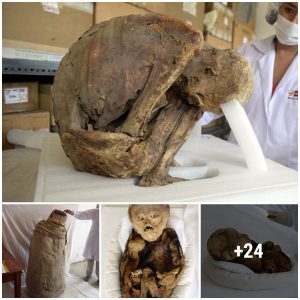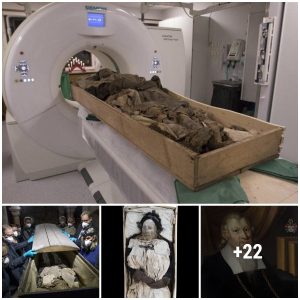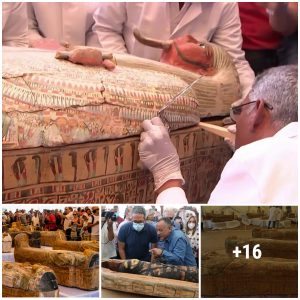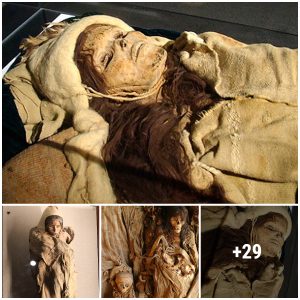8,500 Years Older Than the Pyramids; This is the Oldest Temple Ever Built on Earth
Göbekli Tepe is a center of faith and pilgrimage during the Neolithic Age and is situated 15 km from the Turkish town of Sanlıurfa and added to the UNESCO World Heritage List in 2018.

The monumental structures, which stand as testaments to the artistic abilities of our ancestors, also offer insights into the life and beliefs of people living in the Pre-Pottery Neolithic period (10th-9th millennia BC).
It was not the grandeur of the archeological wonder that dominated my mind, when I stood beneath a 4,000-square-foot steel roof erected to protect the oldest temple in the world in Upper Mesopotamia.
It was how humans of the pre-pottery age when simple hand tools were yet to be discovered, erected the cathedral on the highest point of a mountain range.
Known as “zero points” in the history of human civilization, southeast Turkey’s Göbekli Tepe pre-dates the pyramids by 8,000 years, and the Stonehenge by six millennia. Its discovery revolutionized the way archaeologists think about the origins of human civilization.
“The men, who built the temple 11,200 years ago, belonged to the Neolithic period,” Sehzat Kaya, a professional tourist guide, tells me, “They were hunter-gatherers, surviving on plants and wild animals. It was a world without pottery, writing, the wheel, and even the most primitive tools. In such a scenario, it’s incredible how the builders were able to transport stones weighing tonnes from a quarry kilometers away, and how they managed to cut, carve and shape these stones into round-oval and rectangular megalithic structures.”
Located fifteen kilometers away from the Turkish city of Sanlıurfa, Göbekli Tepe, which was added to the UNESCO World Heritage List in 2018, is believed to be a center of faith and pilgrimage during the Neolithic Age. Since the site is older than human transition to settled life, it upends conventional views, proving the existence of religious beliefs prior to the establishment of the first cities. It altered human history with archaeologists believing that the site was a temple used to perform funerary rituals.
Klaus Schmidt, a German archaeologist and pre-historian, who led the excavations at the site from 1996, noted in a 2011 paper that no residential buildings were discovered at the site, even as at least two phases of religious architecture were uncovered. Schmidt discarded the possibility that the site was a mundane settlement of the period, and insisted that it belonged to “a religious sphere, a sacred area.”
“Göbekli Tepe seems to have been a regional center where communities met to engage in complex rites,” Schmidt, who led the excavations until he passed away in 2014, wrote, “The people must have had a highly complicated mythology, including a capacity for abstraction.”
In speaking of abstraction, Schmidt was referring to the highly-stylized T-shaped pillars at Göbekli Tepe, which means “belly hill” in Turkish. The distinctive limestone pillars are carved with stylized arms, hands, and items of clothing like belts and loincloths.
The largest pillars weigh more than 16 tons, and some are as tall as 5.5 meters. Schmidt believed that there was an overwhelming probability that the T-shape is the first-known monumental depiction of gods. Some researchers have also revealed that the site might be home to a “skull cult”.

The unique semi-subterranean pillars carry three-dimensional depictions – elaborate carvings of abstract symbols as well as animals: Scorpions, foxes, gazelles, snakes, wild boars, and wild ducks. The monumental structures, which stand as testaments to the artistic abilities of our ancestors, also offer insights into the life and beliefs of people living in the Pre-Pottery Neolithic period (10th-9th millennia BC).
“Göbekli Tepe is an outstanding example of a monumental ensemble of megalithic structures, illustrating a significant period of human history,” UNESCO noted in 2018, “It is one of the first manifestations of human-made monumental architecture.
The monolithic T-shaped pillars were carved from the adjacent limestone plateau, and attest to new levels of architectural and engineering technology. They are believed to bear witness to the presence of specialized craftsmen, and possibly the emergence of more hierarchical forms of human society.”
Perched at 1000 feet above the ground, Göbekli Tepe offers a view of the horizon in nearly every direction. The site was first examined in the 1960s by anthropologists from the University of Chicago and Istanbul University. Dismissed as an abandoned medieval cemetery in 1963, the first excavation started in 1996 when Schmidt read a brief mention of the broken limestone slabs on the hilltop in the previous researchers’ report. His findings changed long-standing assumptions.
“It (Göbekli Tepe) is the complex story of the earliest large, settled communities, their extensive networking, and their communal understanding of their world, perhaps even the first organized religions and their symbolic representations of the cosmos,” Schmidt wrote.
Schmidt’s discoveries received wide international coverage. The German weekly, Der Spiegel, went a step ahead, suggesting that Adam and Eve settled at Göbekli Tepe after being banished from the Garden of Eden.
The journal based its suggestion on the coincidence that the land surrounding Göbekli Tepe is proven to be the place where wheat was cultivated for the first time, and the Bible says that Adam was the first to cultivate the wheat after he was banished. Another noteworthy aspect of the discovery is that Göbekli Tepe has also questioned the conventional belief that agriculture led to civilization.
Until the discovery, it was widely believed that complex societies came into being after hunter-gatherers settled down, and started growing crops. But the early dates of the temple’s construction proved the opposite was true – the vast labour force required to build the temple pushed humans to develop agriculture to offer food to the workers.
“The communities that built the monumental megalithic structures of Göbekli Tepe lived during one of the most momentous transitions in human history, one which took the civilization from hunter-gatherer lifeways to the first farming communities,” the UNESCO notes, “The monumental buildings at Göbekli Tepe demonstrate the creative human genius of these early (Pre-Pottery Neolithic) societies.”
Aydin Aslan, Culture and Tourism Director, Sanliurfa tells me that the site hosts over 20,000 visitors every week. The megalithic structures have largely retained their original form, offering unforeseen insights into the life of early humans. “The current site is only one-tenth of the marvels that lie hidden under the hill,” says Aslan.





